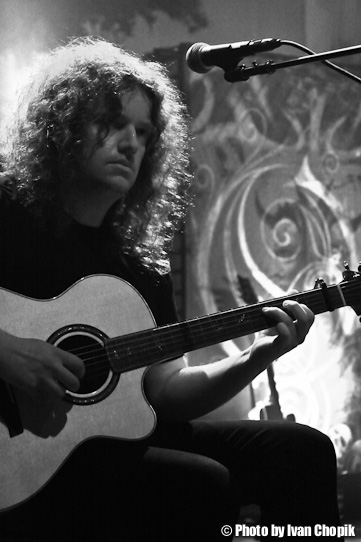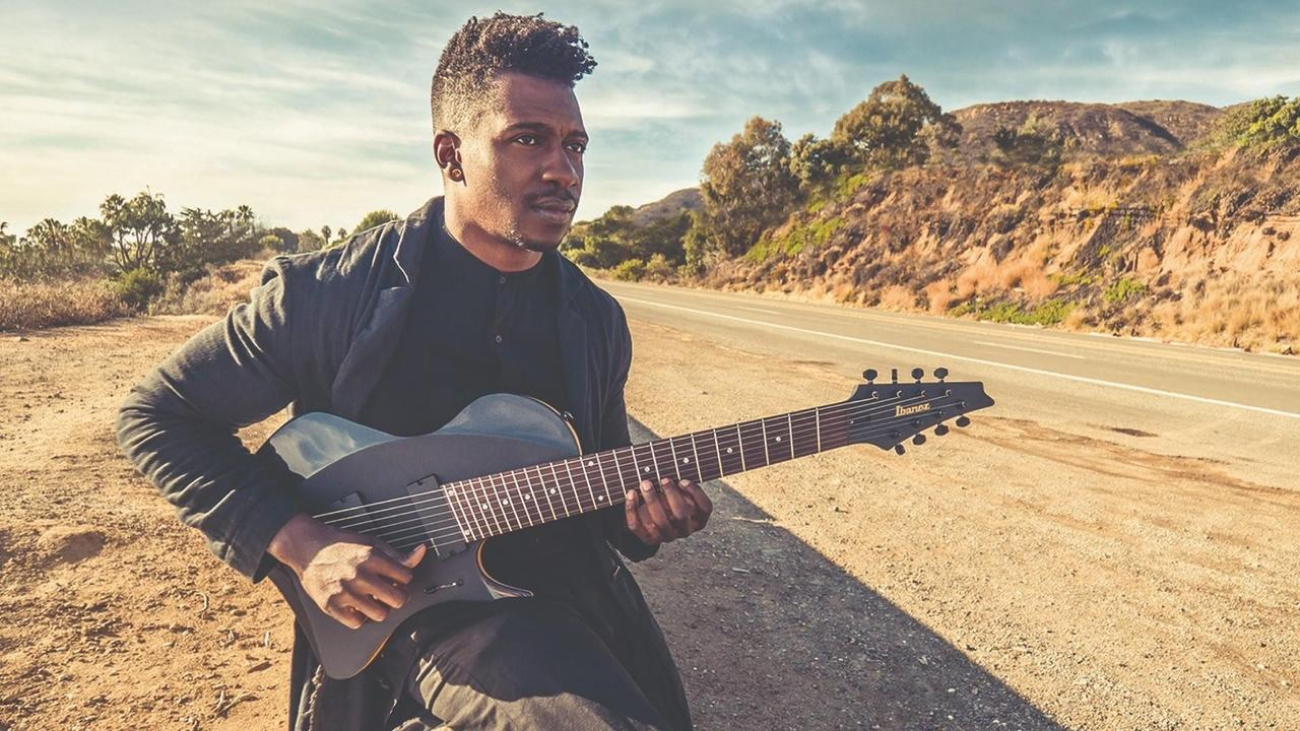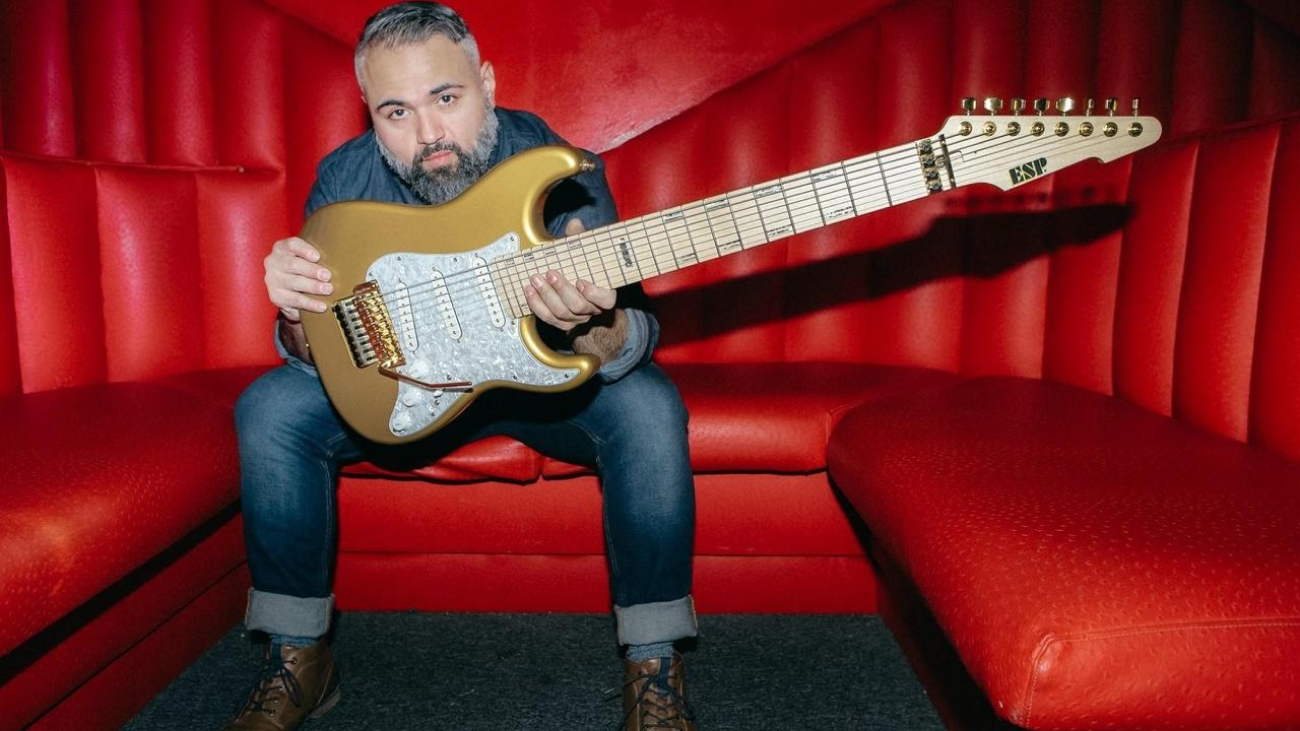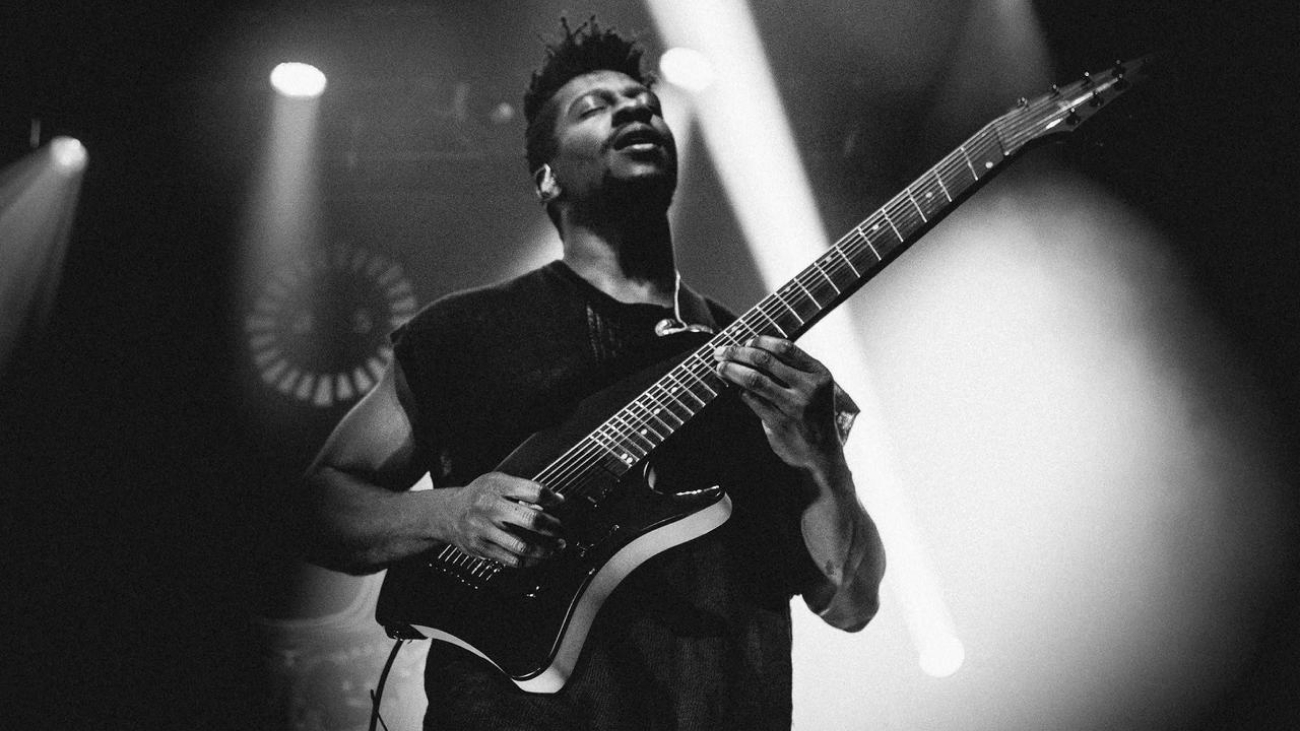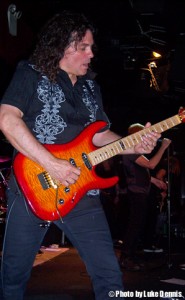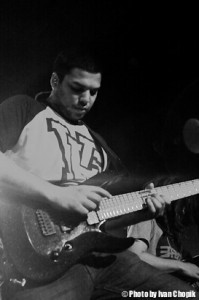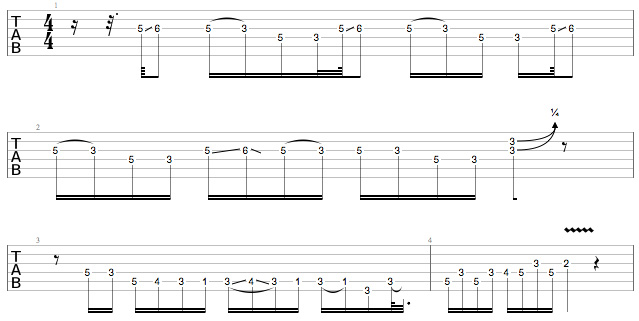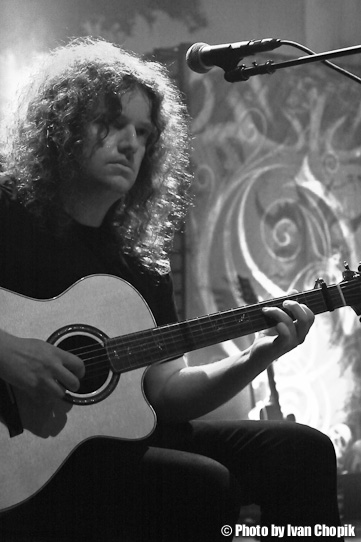 Hailing from Stockholm, Sweden is one of metal’s finest axemen – Fredrik Åkesson. Best known for his work in Arch Enemy, Krux, and progressive metal powerhouse Opeth, Fredrik’s playing style offers an elegant blend of both melody and virtuosity. His lines are memorable and serving to the compositions where they are ingrained, yet also reflect great musical depth and skillfulness. I had the opportunity to speak with Fredrik in Worcester, MA, on September 19th, 2011, during Opeth’s tour in support of their latest offering, Heritage:
Hailing from Stockholm, Sweden is one of metal’s finest axemen – Fredrik Åkesson. Best known for his work in Arch Enemy, Krux, and progressive metal powerhouse Opeth, Fredrik’s playing style offers an elegant blend of both melody and virtuosity. His lines are memorable and serving to the compositions where they are ingrained, yet also reflect great musical depth and skillfulness. I had the opportunity to speak with Fredrik in Worcester, MA, on September 19th, 2011, during Opeth’s tour in support of their latest offering, Heritage:
IC: Heritage is your second album with Opeth. How would you say your role has changed since you joined in 2007?
FÅ: One thing that I’ve noticed is that in the beginning I had to struggle more to learn Mikael [Åkerfeldt]’s way of writing riffs and also the acoustic kind of finger-picking parts. I had to put a lot of time into that. Now that I’ve been with the band about four and a half years it feels easier for me. I think I’ve learned Mikael’s way of playing guitar better. I should have, it’s been like four and a half years! [laughs] You have to improve. It wasn’t anything of a struggle. Maybe there’s more lead playing on this album, but it’s definitely not overplayed.
I was lucky. When I joined we did Watershed, I got to record with the band before we started touring and [I felt] a bit more involved. In a way the whole band has developed. We hang out a lot and we’re more relaxed playing together.
IC: Do you and Mikael ever have disagreements on how a solo should sound or any particular part that you might bring to the table?
FÅ: Yeah, it happens, actually. When we did Watershed we didn’t argue or anything, but on the new album we did have some arguments. There is a song on the new album called ‘Slither,’ which sounds in a way like an old forgotten Rainbow tune from the early Dio era. Mikael wanted me to do a bit of a gimmick-Blackmore kind of a solo. I did it, but I played it on a guitar with humbuckers and he thought it sounded too slick, too perfect. So I had to redo it and make it dirtier. I was a bit pissed about that at the time, but in the end I guess he was right. It came out pretty cool. It’s a bit more vintage than the first version.
But I think it’s healthy in a band if you do have some friction. I mean, if everybody always says yes and is happy all the time…. You need a little bit of turbulence. We get along great though.
IC: There seem to be more single-coil sounds and grittier, less polished guitar sounds throughout the record. How has your gear changed? Are you using Strats on the record?
FÅ: Yeah, we used the original single-coil pickups for some of the riffs. We used a bunch of Strats, PRS, of course. We used the Starla model and I used the Mark Tremonti model for a couple solos. PRS has a Gibson 335 jazzy kind of guitar, I don’t know the exact name of it off the top of my head, but we used that quite a lot. Mike has a bunch of old Strats that we used.
We talked about that before we entered the studio – that we were going to go a bit different with the guitar tones of this album. We wanted the heavy riffs played on the neck pickup with a bit less distortion – more of a string sound instead of the wall-of-distortion type of sound. I kind of like both, but on this album I think it’s suited pretty well. It’s a bit of an old-school recording with the drums and bass. There’s no editing at all on the album, no sound replacements on the drums. It’s just the proper live takes.
| Click play above to watch the video of this interview. |
IC: That’s quite impressive. In today’s metal world it’s very common to sound replace and edit.
FÅ: In a way I think we were a bit tired of some of those productions that were very clicky. I guess Opeth has always been about not repeating ourselves. I don’t think we do that on Heritage. When Mike started out writing, since he writes the majority of the songs, he started out with a couple songs that were kind of a continuation of Watershed, but he actually deleted those two songs.
There were some really cool riffs. I was like ‘what the fuck are you doing? Why are you deleting those?!’ He came up with this new stuff and he told me ‘there ain’t gonna be any growling on new album’ and I was like ‘are you kidding?!’ But then when I heard the stuff he came up with I was like ‘oh, there’s no room for it.’ It’s the vision that Opeth is in for now. You never know what we’re going to sound like on the next album.
IC: When the announcement was made that there would be no growls on the album it definitely turned some heads. But it makes sense.
FÅ: There are a lot of haters I guess, but you can’t please everyone. I hope people will come to like it. We’re happy with it. We stand up for it. That’s the most important thing for us: that we feel that we’re satisfied with the result.
IC: It definitely feels like a [new] chapter in Opeth’s history, rather than a continuation of Watershed. Like you said, Mikael had more songs that didn’t get used…
FÅ: Yeah, absolutely. Me and [bassist Martín] Méndez recorded a bunch of stuff also, but that was a bit more in the vein of the old type of Opeth. It took me a while to get used to Mikael’s approach for this album, but when he has something cooking it’s usually pretty good soup.
IC: One of the bonus tracks on the album, ‘Pyre,’ was something you and Mikael wrote for the album. How did that track come about and how did you guys end up writing it together?
FÅ: Actually, me and Méndez and Axe [drummer Martin Axenrot] were jamming out at the rehearsal space with a bunch of the riffs that me and Méndez had been working on. We started jamming on this theme and I recorded it with my phone. I played Mike like ten different ideas and he was like ‘yeah, that’s cool but I don’t know…’ But then he heard this… ‘Oh, that’s good!’
So we messed around with it a bit at his studio. There’s only three parts to the song. It’s pretty simple, but it came out cool. I like it. It’s kind of a soft song… long guitar solo, some improvised nylon thing. In the studio I was just messing around with this nylon [guitar]. Initially, we wanted to do an electric guitar solo; the second half is on electric now, though with more of a laid back Mark Knopfler tone to it. That was a kind of a spontaneous idea. We got into the studio and Mikael was like ‘you should play the nylon.’ I was like ‘Fuck!’ [laughs] But he was right! He’s usually right, actually.
IC: This time you guys didn’t get to detune it at the end of the song [like you did on ‘Burden’ from Watershed].
| ‘Burden’ official music video. |
FÅ: No, we skipped that part this time around. Once is enough. [laughs]
IC: I was actually wondering how that came about. This is at the end of ‘Burden.’
FÅ: Well, it was Mike’s idea, actually. This part is very beautiful and we thought it could be interesting to mess it up, make it ugly, and destroy it since it’s kind of a ballad-rock song. He had a sort of need to destroy this beautiful part. [laughs] I managed to stumble on this little box so that’s why there’s a laugh at the end of the song.
Some people really hate that we did that with the tuning, but at least there’s two rounds of it with the proper tuning. This guy in Norway told me that he gave the album a four out of five, but if we hadn’t done that with the tuning, we’d have gotten a five out of five.
IC: What’s your favorite moment on Heritage?
FÅ: Well, if we’re talking about guitar solos, I guess it’s probably ‘Nepenthe.’ It’s a pretty jazzy track with a fusion type of solo. I’m not really a fusion player, I can’t play that stuff, but I think I faked something that sounds a bit like early Allan Holdsworth. That was kind of my goal. He had a band in the 70s called Tempest, where he played with more of a distorted rock tone, but still you can hear that it was Allan with his typical way of playing. [Nepenthe] was a cross between that and a bit of early Eddie Van Halen, maybe. That’s probably the most shreddy solo of the album for guitar nerds.
IC: Let’s talk a little bit about outside of Opeth. What’s going on with Krux?
FÅ: Krux is going to release a new album this fall. We just did the last solo before we flew over here. I did the solos at my house recording with the Axe [FX by Fractal Audio] and then one line signal. Nico [Elgstrand], the guitar player from Entombed is mixing the album and it’s pretty much done.
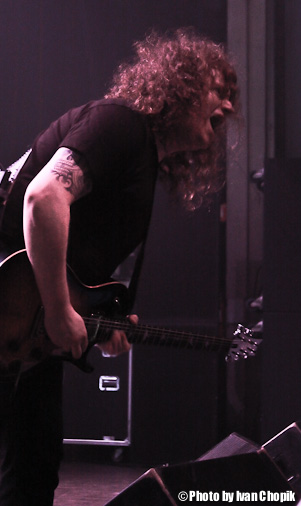
IC: Would you say that’s your project?
FÅ: No. It is a project since everybody in that band is busy with other stuff, but it’s a project that Leif [Edling] from Candlemass started with Jörgen [Sandström] and Peter [Stjärnvind] who used to play with Entombed. Those are the three guys who started it. Me and Nico played a few leads on the first album and then I became more of a member in the band by the second album. It’s difficult with that band, because everybody’s doing other stuff, so whenever time allows we do something.
IC: Can you tell us a little bit about what the album will be like? What can fans expect?
FÅ: Tons of guitar solos! [laughs] The last album, [II], was kind of dirty with, I wouldn’t say shitty production, but the songs were actually from the rehearsal space when we learned them for the first time. This one sounds better.It sounds more done, in a way, but I like the way Krux has kind of a dirty sound. It’s a doom metal album with some psychedelic influences. It has some faster stuff, not superfast like thrash, but considering it’s a doom metal band some of it is fast. The guitar player from Trouble [a classic doom band from Chicago] is playing a solo on it. It’s gonna be pretty cool.
IC: Outside of Opeth and Krux, do you have any other projects going on?
FÅ: Not really. I’ve always wanted to do a record of my own. I have a bunch of ideas but there’s never the time to finalize it. I’ve done a couple of instrumental tracks, but I didn’t really want to do an instrumental guitar album. I fixed up a portable studio, so the goal on this tour is not to drink so much beer, but try to be focused and record some ideas.
IC: You mentioned that you were recording at home with your Axe-FX. Can you tell us a little bit about how you use it, what kind of patches you use, and maybe also how come it’s not a part of your live rig anymore?
FÅ: I love it. It’s great. I think it works best if you use it as a preamp. I now use a new rack system with a Voodoo Labs switching system, so I have a bunch of analog pedals in the rack drawer. I have a T.C. Electronics G-Force and a Dunlop Crybaby Rock Wah, which I love. That’s the best sounding wah ever. You can get any wah sound you want with that one. You have an equalizer and a boost, and you can connect a volume pedal to it, as well.
Also, I like the fact that you don’t have to run a cable all the way up to the front [of the stage]. The idea with my new system is to only have control cables up front so you don’t have any audio cables [up front] and you can keep the cable length as short as possible.
This guy in Sweden called Göran Elmquist built my rack. He has a firm called S.O.S., Sound of Silence [soundofsilence.se]. He has a showroom there, you can check it out. There’s a bunch of pictures of stuff he did. He’s really a pro, very nerdy with cables and stuff.
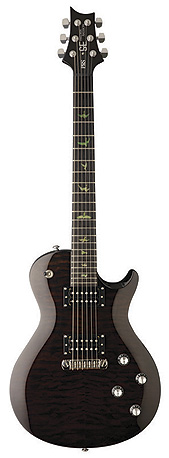
PRS SE Fredrik Akesson Signature Electric Guitar
I’ve been working with Dunlop and MXR quite a lot so there’s a bunch of that stuff in there like a [MXR] Phase 90, Micro Amp [boost pedal], the Carbon Copy analog delay. With Opeth I need a lot of different sounds: I need the metal rhythm sound, I need a good clean sound, I need a crunch sound, and I need a lead sound. Sometimes, I need a more ambient sound, so I have a rack effect, the T.C. Electronics G-Force, for reverbs and stuff like that.
Voodoo Lab is like the brain. I have the Voodoo Labs floor control and a Dunlop volume pedal that works like an expression pedal so with some tones I can get a longer delay. It’s useful for when I have more atmospheric ‘left out’ parts… I’ll be picking and by the end you might want to add some extra reverb. It has Dunlop volume pedal and a tap-tempo [to control it].
We use the Line 6 G90 [wireless] system now, which I, Mikael, and Méndez really like. We did some A/B tests and I don’t think you lose any sound really. I couldn’t tell. You don’t lose any low-end with those. We’re pretty happy with that. Now I got my signature model with PRS coming out which I’m really excited about. I’m very happy about the results. [Check out the end of Fredrik’s masterclass video for a detailed overview of his signature model.]
IC: Are there any new [artists] that you’ve heard recently that have caught your attention?
FÅ: I saw this Australian guy playing acoustic, this really young guy, but I can’t remember his name. Andy Aledort at Guitar World showed me [him] and it was pretty amazing. Like Tommy Emmanuel he kind of splits his brain in two parts and plays rhythm and lead at the same time. It’s quite impressive.
Otherwise, I’ve been jamming when I get the chance with Emil Werstler from Daath, because he’s into that gypsy jazz stuff. That’s something that I feel like I could learn something from. I like that approach and that’s something I’m trying to work on. I guess the goal is to be able to improvise over one of those chord patterns, but I can’t do it. Maybe I could fake something. Maybe someday.
IC: You have the dream gig for a lot of guitarists out there. Do you have any advice for young aspiring players trying to get into the industry and make their mark?
FÅ: The important thing is the social matter. You can’t be an asshole or people won’t work with you. But then again, you don’t want to run around licking people’s asses either. It’s a balance thing.
I give some lessons back home and playing wise, what I’ve been bitching about most is ‘practice slow.’ If you practice slowly, the speed is going to come eventually. For people that have stressed the speed thing, usually it doesn’t get that clear. That’s one goal.
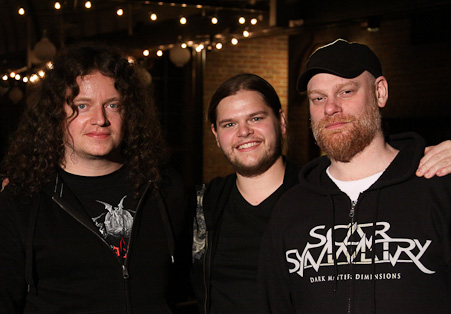
Fredrik Åkesson, Ivan Chopik, Per Nilsson
Practice a lot. Jam along with tunes. Play songs instead of just playing licks – that’s important, too. Most of the time you’re just going to play rhythm, anyway. I remember when I was a kid, I would only focus on playing fast, but then when I started playing with bands I felt a bit behind when it came to rhythm playing, so I had to work quite a lot on that.
When I was a kid, I used to sit around and play along with Paul Gilbert videos, which were great because he’s a great picker, very accurate. I guess the guys who wanted to make me practice more when I started playing at eleven were, basically, Ace Frehley and Angus Young.
Then I saw Michael Schenker on TV and I got a bit spellbound; ‘Wow, you can really make those sounds with the guitar.’ [He] got me interested in playing more. And also when the first Yngwie [Malmsteen] album came out, Rising Force, it was a really big thing. He played really melodically and very controlled. I was also into Eddie Van Halen. George Lynch was an inspiration back in the day, Gary Moore, [Ritchie] Blackmore, Uli Roth, Frank Marino… guys like that.
IC: How have those influences changed over the years for you?
FÅ: In a way I guess it’s cliché, but I don’t listen that much to other guitar players now, because we play so much. We’re in the studio for fourteen hours and when I go back home I just want to rest my ears. I usually listen to a lot of music when we’re on the road, but when we’re drunk and drinking beers, usually Iron Maiden or Accept songs end up there.
[Special thanks to Chris Robinson for his excellent camera work and Cigar Masters of Worcester, MA for their warm hospitality.]



